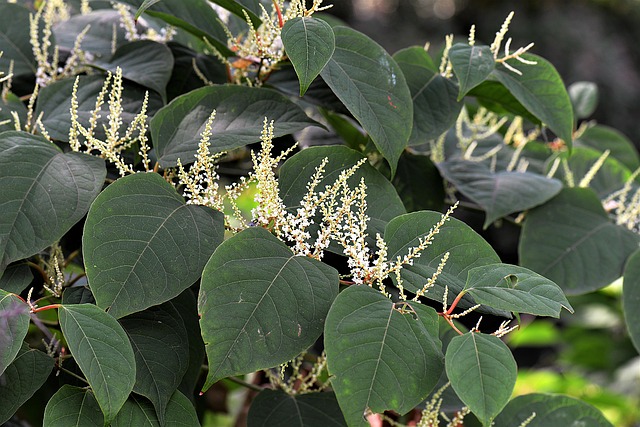
First introduced to the UK in the 19th century, Japanese knotweed has become a widespread issue for many people across the country. Brought here from Asia as an ornamental plant and cattle fodder, knotweed was reported as a garden escape in the late 19th century which eventually naturalised populations in the early 20th century. Fast forward to the present day and knotweed can be found all over the UK, causing tremendous amounts of structural and environmental damage across many cities and towns.
So, where does Japanese knotweed grow and where are the areas that you're most likely to find it? Read on to find out!
Where is Japanese knotweed most commonly found?
Domestic gardens
Japanese knotweed can grow in any domestic garden, establishing itself in several ways. Roots or rhizome fragments may be transported in soil or compost, or the plant may simply encroach from a neighbouring property. If the garden is adjacent to wasteland or an area that is not well looked-after, the chances of knotweed growing and encroaching onto the garden are markedly higher.
Flower beds and planted borders
As a weed, Japanese knotweed may seem right at home in a flower bed or planted border when it is unknowingly maintained through regular weeding or through pruning of dense shrubs. When the shrubs or trees that were hiding the knotweed are then removed, it can then show itself in a remarkable fashion, exhibiting the real problem you now have.
Larger sites
Japanese knotweed can also be found growing in larger sites such as commercial lands, woodlands and open spaces. Car parks and lay-bys are particularly at risk of knotweed infestations as these are where fly-tipping is commonly found.
Watercourses
Another very common area where knotweed grows here in the UK is near water, particularly rivers and streams. Knotweed is hardly every spread by seed and instead is spread as a result of fragments finding their way into watercourses where they can spread downstream for miles. This causes new populations and infestations to emerge in several new locations.
Railway lines
Another area you're likely to find Japanese knotweed growing is near railway lines. As railways are built in a linear fashion with often wide margins of vegetated lands that pass through several built-up areas, Japanese knotweed can spread and grow as a result of fly-tipping over fences.
These are the most common places where you are likely to find Japanese knotweed growing. But there's no need to panic - you can visit our page to learn how to identify Japanese knotweed!
If you believe you have spotted a knotweed infestation on or near your property and would like professional assistance, we at Taylor Total Weed Control are here to help! Click below to learn all about our knotweed services and how we can remove knotweed from your property.
Japanese Knotweed Removal >
To get in touch with a member of our team, complete the simple contact form below and we will get in touch with you as soon as possible!
